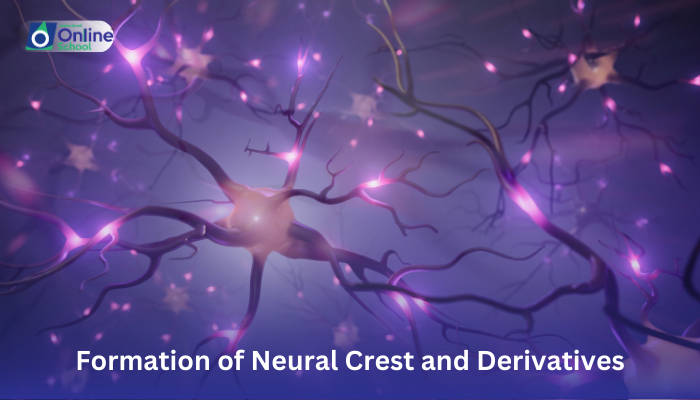
Learning Outcomes:
i. Define the neural crest and its unique origin during embryonic development.
ii. Describe the migration patterns and differentiation pathways of neural crest cells.
iii. Identify and explain the diverse structures and tissues derived from neural crest cells.
iv. Appreciate the remarkable adaptability and versatility of these remarkable cells in shaping embryonic diversity.
Introduction:
Imagine a group of adventurous cells, bursting with potential and a thirst for exploration. These are the neural crest cells, a unique population that emerges from the developing nervous system and embarks on a remarkable journey across the embryo. In this lesson, we'll follow their nomadic adventures, witnessing how these versatile cells transform into a kaleidoscope of tissues and organs, shaping the incredible diversity of life.
i. The Origin Story: A Breakaway from the Fold
As the neural tube forms during neurulation, a small group of cells at the edges choose a different path. These cells, nestled between the ectoderm and the neural tube, undergo an epithelial-to-mesenchymal transition, losing their cell-to-cell connections and becoming migratory. This is the birth of the neural crest!
ii. Migration Marvels: Exploring Uncharted Territories
Guided by a compass of signaling molecules and physical cues, neural crest cells set off on their epic journeys:
Cranial Stream: These cells ascend towards the head, contributing to the formation of facial bones, cartilage, and pigment cells.
Trunk Stream: Venturing down the body, they form structures like the heart's septa, adrenal glands, and parts of the peripheral nervous system.
Vagal Stream: Descending towards the gut, they build components of the enteric nervous system and melanocytes in the skin.
iii. Metamorphosis: From Nomads to Builders
Once at their destinations, neural crest cells undergo a dramatic transformation, differentiating into a multitude of specialized cell types:
Melanocytes: These pigment-producing cells color our skin, hair, and eyes.
Chondrocytes and osteoblasts: They build cartilage and bones, forming the framework of our skull and face.
Schwann cells: These vital cells wrap around nerve fibers, protecting and supporting the transmission of signals.
Smooth muscle cells: They power the movements of our intestines, blood vessels, and other organs.
iv. The Power of Versatility: A Symphony of Diversity
The neural crest's adaptability is its defining feature. Depending on their location and the signals they receive, these cells can become strikingly different tissues, contributing to the unique characteristics of each species.
Feathers in birds: Neural crest cells form the feather follicles, giving birds their distinctive plumage.
Teeth in mammals: Enamel and dentin, crucial components of our teeth, are derived from neural crest cells.
Sensory cells in fish: These cells contribute to the formation of taste buds and other sensory organs in aquatic creatures.
The neural crest, with its nomadic spirit and remarkable versatility, is a testament to the incredible flexibility of life. By understanding their journey and diverse contributions, we gain a deeper appreciation for the intricate tapestry of embryonic development and the remarkable diversity of life on Earth. Remember, these seemingly tiny cells hold within them the blueprint for a vast array of structures and functions, reminding us of the boundless potential hidden within the building blocks of life.